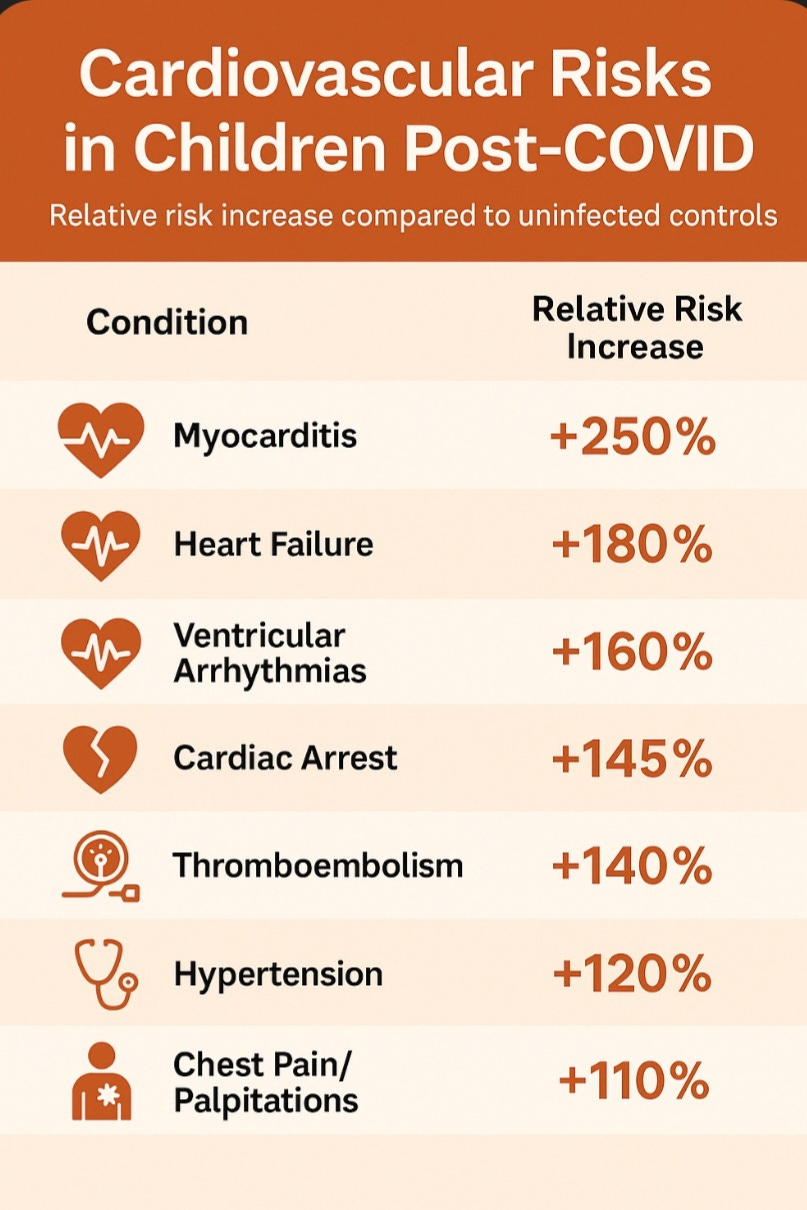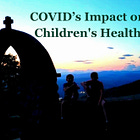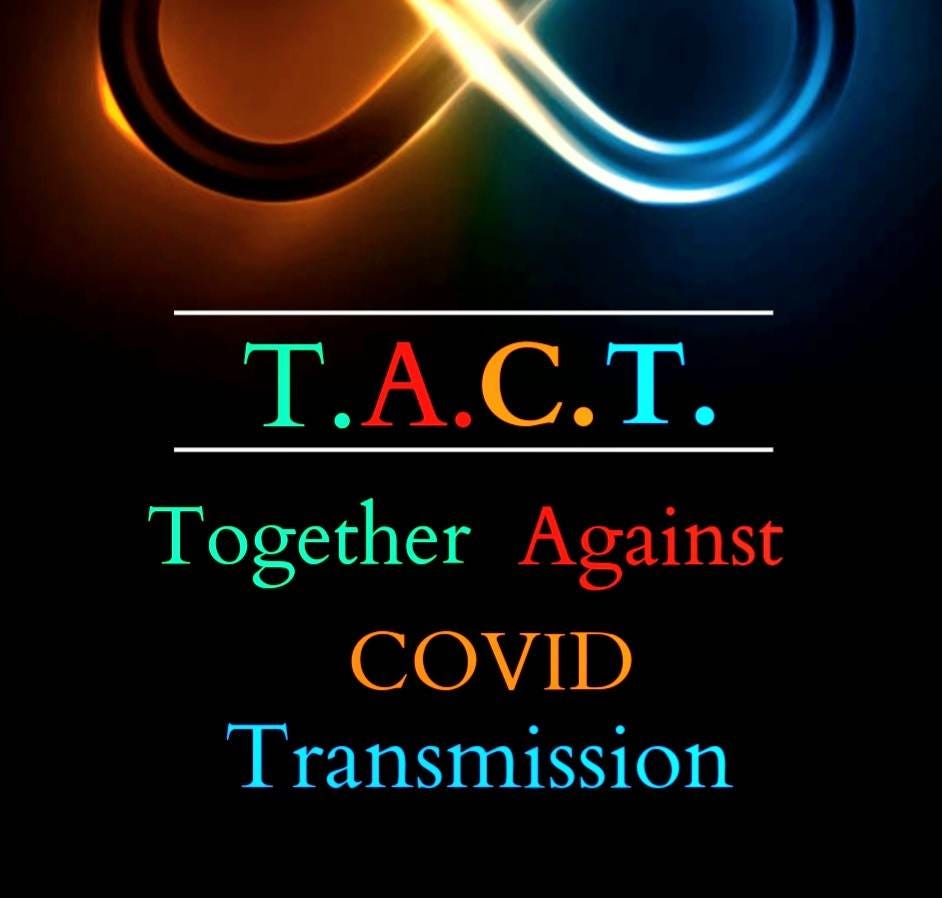Negligence with Consequences: COVID Is Damaging Kids’ Hearts
Clean Air in Classrooms is a Right - Not a Privilege
A chilling new study published in Nature Communications on April 11, 2025 should be headline news across the country—but predictably, it’s not. The paper, titled “Cardiovascular post-acute sequelae of SARS-CoV-2 in children and adolescents,” confirms what many parents, scientists, and front-line clinicians have feared: COVID-19 is damaging the hearts of our children.
This is neither a vague nor isolated concern. A comprehensive study analyzed data from 19 leading children’s hospitals and health institutions across the U.S., all part of the RECOVER consortium. Between March 2020 and September 2023, the dataset included 297,920 children who tested positive for SARS-CoV-2 and 915,402 matched controls who tested negative. Using anonymized electronic health records, researchers examined the risk of a wide range of cardiac signs, symptoms, and conditions occurring 28 to 179 days post-infection. The findings were unequivocal:
> “Children and adolescents with prior SARS-CoV-2 infection are at a statistically significant increased risk of various cardiovascular outcomes, including hypertension, ventricular arrhythmias, myocarditis, heart failure, cardiomyopathy, cardiac arrest, thromboembolism, chest pain, and palpitations.”
Key Findings: Cardiovascular Risks in Children Post-COVID
Here's a visual summary of some of the increased risks in children post-infection, according to the study:
(Exact percentages are illustrative for this summary; refer to full study for detailed hazard ratios)

Let that sink in.
This isn’t “just a cold.” This is organ damage. And it’s affecting kids.
This is a larger study but we have earlier studies highlighting the risks. This discusses some earlier studies.
💔Heart Dysfunction💔
This is one study but taken together with what we already know, this is tragic. This shows deformation or dysfunction of the Left Ventrical (LV) after asymptomatic or mild COVID in previously healthy children.
How Did We Get Here?
Despite growing global evidence that COVID is not benign in children, the U.S. and most countries around the world have spent the last three years pretending otherwise. Schools were forced open. Mask mandates were removed. Testing was dismantled. Data collection was gutted. Ventilation upgrades? Optional, and usually unfunded.
We didn’t just remove every barrier to viral spread—we actively normalized it.
Now, millions of children have been infected—many of them multiple times. And the consequences are piling up in the form of post-acute sequelae: chronic illness, immune dysfunction, brain inflammation, and cardiovascular damage.
This Isn’t an Anecdote. It’s a Pattern.
The April 2025 study adds to a growing list of research showing that COVID can cause harm long after symptoms pass—even in kids. Other studies have shown elevated risks of:
POTS and dysautonomia
Cognitive and attention impairments
Persistent fatigue
New-onset diabetes and autoimmune disease
And yet, our public health policies haven’t adjusted. Schools still don’t require clean air. Officials still pretend that “mild” infection equals “harmless.” It's a lie with generational consequences.

Safeguarding Children: COVID's Impact on Children's Health and Understanding Airborne Transmission
Clean Air Is a Right, Not a Luxury
Every school should have:
Verified mechanical ventilation that maintains CO2 levels at or below 650ppm
Portable HEPA filters in every classroom
CO₂ monitoring to assess ventilation effectiveness
Masking as a community norm during surges
Transparent outbreak reporting
We require clean water. We require fire codes. Why is clean air still considered optional? Especially when the danger is airborne and persistent.
What We Must Do—Now
1. Emergency funding for school air quality upgrades.
2. Legislation requiring minimum IAQ (indoor air quality) standards.
3. Public education campaigns on airborne risk.
4. Surveillance and tracking of long-term COVID effects in children.
5. Reinstate evidence-based layered mitigations in schools and public buildings
Quote from the Study’s Authors:
> “These findings highlight the importance of long-term monitoring of children and adolescents following SARS-CoV-2 infection, even in cases that were asymptomatic or mild.” – Ziyad Al-Aly et al., Nature Communications, April 2025
TACT’s View: Clean Air in Classrooms Is a Right, Not a Privilege
As adults, we carry a fundamental duty to protect our children—the very people who will shape the future long after we're gone. This isn’t about inciting fear. It’s about preventing harm.
Clean air in classrooms is a proven, powerful tool for improving student health, focus, and academic performance. Lower levels of carbon dioxide (CO₂) and higher oxygen availability have been linked to sharper thinking and better learning outcomes. Simply put: when children can breathe, they can thrive.
Airborne allergens are the leading cause of school absences. But they can be filtered out with the right ventilation and filtration—keeping kids in the classroom and reducing chronic respiratory issues like asthma.
Even more urgent is the risk of airborne viruses—COVID-19, Epstein-Barr Virus (EBV), measles, and influenza among them. These aren’t just short-term illnesses. Many can cause long-term damage to developing organs and immune systems, contributing to conditions typically seen in old age: fatigue, memory loss, and cardiovascular issues. The result? A generation that could age faster and live shorter, sicker lives—all because we failed to protect the air they breathed as children.
We have a once-in-a-generation opportunity to do better—not just to prevent disease, but to uplift education, protect community health, and give our children the chance to live stronger, longer lives.
This fight isn’t new. In the 1800s, the battle for clean water was met with fierce resistance. The wealthiest and most powerful people dismissed the calls for sanitation reform, even as cholera and typhoid tore through cities. Public health pioneers had to push against the tide of indifference and profit-driven opposition. Today, we face the same resistance—only now it’s about the air we breathe.
The science is clear. The need is urgent. And history has shown us what happens when we wait too long.
Clean air in public spaces, especially in schools, is not a “nice-to-have”—it’s a public health imperative. We have a rare opportunity to get it right before an even deadlier pandemic emerges. Let’s not repeat the mistakes of the past.
Clean Air for Kids: Our Immediate Responsibility
We cannot let another school year pass while our children are exposed to preventable harm. If this study concerned you, let it galvanize you. Share this now. Demand clean air at your school board. Call your representatives. Every classroom deserves clean air—our children's well-being depends on it.
Support Our Work
If you value independent public health advocacy and want to help us continue tracking science, exposing policy failures, and fighting for safer schools, please consider subscribing to T.A.C.T. (Together Against COVID Transmission).
Your support helps us spread awareness, share lifesaving research, and build pressure for real change.
Subscribe. Share. Speak up. Together, we can protect the next generation.







Unfortunately, childhood mortality is on the increase as well.
https://x.com/falsel_net/status/1824872652894355885
The folks who have a pretty clear understanding of what is happening are the insurance companies since they are in the business of pricing life insurance. They know.
https://www.swissre.com/institute/research/topics-and-risk-dialogues/health-and-longevity/covid-19-pandemic-synonymous-excess-mortality.html